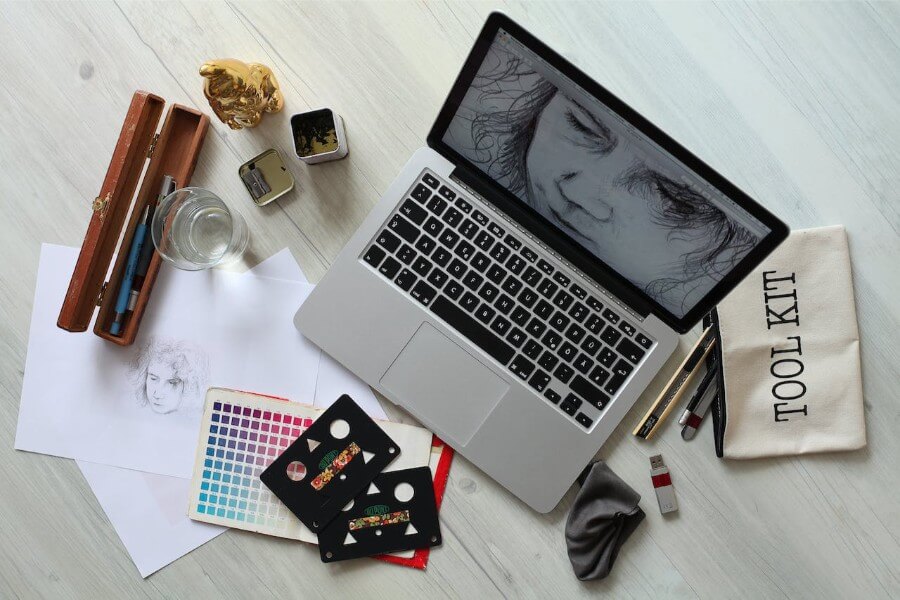
In the digital age, the ability to create visually compelling content has become crucial for individuals and businesses alike. DIY graphic design has emerged as a popular approach, thanks to a plethora of online tools and resources that democratize design capabilities. However, diving into DIY graphic design without a roadmap can lead to common pitfalls and mistakes that detract from your message. This comprehensive guide aims to navigate you through the essential do’s and don’ts of DIY graphic design, ensuring your projects not only look professional but also communicate effectively.
The Do’s of DIY Graphic Design
Embrace the Power of Simplicity
Keep It Clean and Clear: A minimalistic approach often yields the most impactful results in design. A clutter-free composition with ample white space can significantly enhance the readability and effectiveness of your message. Opt for a streamlined color palette and avoid overcrowding your layout with excessive elements.
Choose Fonts with Intention: The selection of typography in your design plays a critical role in readability and atmosphere. Stick to a limited set of fonts—ideally one for headlines and another for body text—to maintain visual harmony. Ensure your fonts are legible across all devices and sizes.
Understand and Utilize Color Theory
Color Psychology: Colors have the power to evoke emotions and set the tone for your design. Selecting the right color palette can amplify your message; for example, blue instills a sense of trust and calm, while red can convey passion or urgency. Use color psychology to your advantage to create the desired impact.
Consistency is Key: Consistency in your color scheme across all designs fortifies your brand identity and professional image. Utilize tools like Adobe Color or Coolors to develop a harmonious color palette that aligns with your brand’s ethos.
Focus on Typography
Hierarchy and Readability: Establish a clear visual hierarchy using typographic elements to guide the viewer’s eye through your design. Differentiate your headings, subheadings, and body text through size, weight, and color to ensure a structured and navigable layout.
Leverage White Space: White space, or negative space, is a potent design element that helps to balance out your composition and highlight key information. Strategic use of white space can significantly improve the aesthetics and readability of your design, making it more engaging for the audience.
The Don’ts of DIY Graphic Design
Overcomplicating Your Design
Avoiding Information Overload: Bombarding your audience with too much information at once can lead to confusion and disengagement. Focus on delivering your message succinctly and prioritize content to ensure your key points stand out.
Steering Clear of Trend Overload: While keeping up with design trends is beneficial, blindly following them without consideration for your brand’s identity can result in a disjointed appearance. Always align design trends with your unique brand voice and message.
Neglecting the Basics of Design
Ignoring Design Principles: Basic design principles such as balance, contrast, alignment, and repetition are fundamental to creating visually appealing compositions. Neglecting these principles can lead to designs that feel chaotic or unbalanced.
Overlooking Typography Mishaps: Using too many font styles or neglecting the spacing and alignment of your text can make your design appear amateurish. Pay attention to kerning (the space between characters) and leading (the space between lines) to enhance readability.
Underestimating the Importance of Quality Content
Settling for Low-Resolution Images: Utilizing high-quality, relevant images is crucial for a professional-looking design. Low-resolution images can make your work appear unprofessional. Invest time in sourcing or creating high-quality visuals that complement your message.
Forgetting to Adapt for Different Platforms: Designs often need to be adapted for various platforms (e.g., social media, print, websites) to ensure consistency and effectiveness. Ignoring the specific requirements and dimensions of each platform can result in poorly optimized designs that fail to capture attention.
In Conclusion
Venturing into DIY graphic design is an exciting opportunity to express creativity and enhance your or your brand’s visual identity. By following these do’s and don’ts, you’ll be better equipped to create designs that are not only aesthetically pleasing but also effectively communicate your message. Remember, graphic design is a skill that improves with practice, experimentation, and feedback. Stay curious, keep learning, and embrace the creative journey.